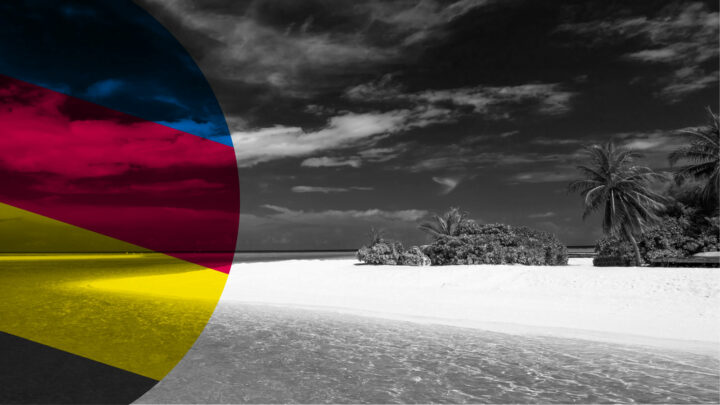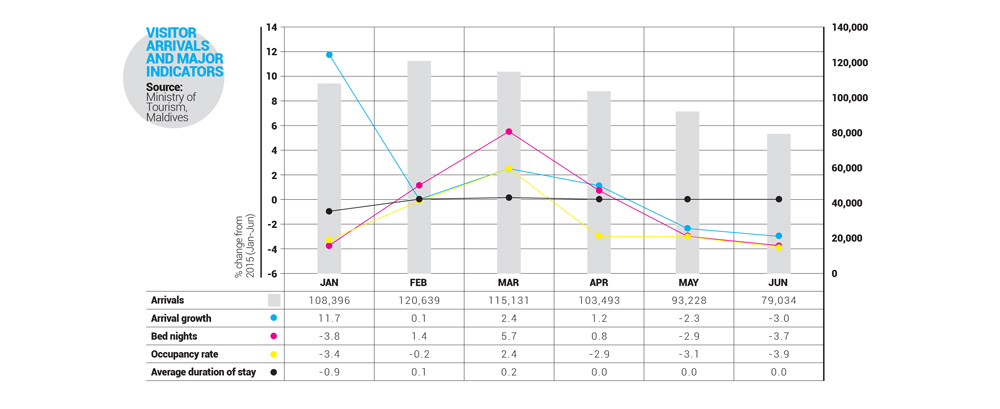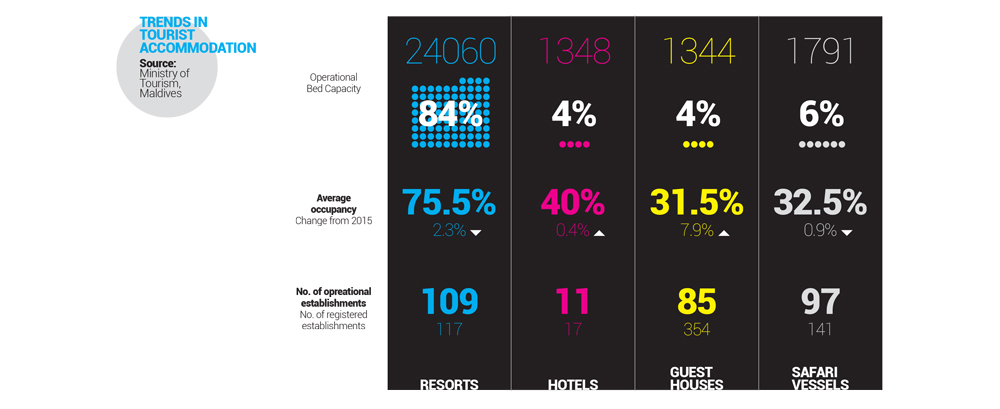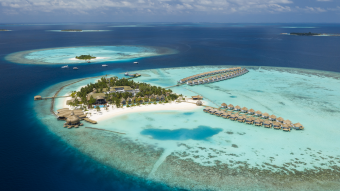
An analysis of demand and supply in the Maldives
[vc_row][vc_column][vc_column_text]Visitor arrivals and major indicators
 Maldives has been maintaining its position as one of the most attractive holiday destinations in 2016 with an average arrival growth rate of 1.7% for inbound international tourists in the first half of the year 2016. The year began with a strong performance with a growth rate of 11.7% on tourist arrival in January compared to the same period in 2015. And, Maldives welcomed a total of 619,921 international tourists at the end of the first six months, while the highest number of tourist arrival was experienced in the month of February.
Maldives has been maintaining its position as one of the most attractive holiday destinations in 2016 with an average arrival growth rate of 1.7% for inbound international tourists in the first half of the year 2016. The year began with a strong performance with a growth rate of 11.7% on tourist arrival in January compared to the same period in 2015. And, Maldives welcomed a total of 619,921 international tourists at the end of the first six months, while the highest number of tourist arrival was experienced in the month of February.
Looking at other key indicators, the tourist bed nights and occupancy rate depicted negative growth for most of the months compared to the same interval in the previous year. Also, the average duration of stay remained same as during the first half of 2015 for most of the months with a semi-annual average of 5.7 days.
Major international inbound tourism source markets
 As per the most recent statistics of the Ministry of Tourism, the visitor market dynamics has changed to some extent in the first half of 2016 compared to the same period in the previous year. Most significantly, Europe seems to have regained its position as the regional market leader with a narrow 2% increment while the recently leading Asia & the Pacific region again went back to the second place, while the rest of the regional markets remained unchanged. However, with such a slight change in the two major regional source markets, it is yet too early to predict the same result at the end of the year.
As per the most recent statistics of the Ministry of Tourism, the visitor market dynamics has changed to some extent in the first half of 2016 compared to the same period in the previous year. Most significantly, Europe seems to have regained its position as the regional market leader with a narrow 2% increment while the recently leading Asia & the Pacific region again went back to the second place, while the rest of the regional markets remained unchanged. However, with such a slight change in the two major regional source markets, it is yet too early to predict the same result at the end of the year.
 Likewise, as seen from the regional markets, similar trends were identified from the individual markets. Visitors from China has reduced markedly with an accumulated average reduction of 11.4% in the first half of the year 2016. Although, still the county has been the top source market for Maldives holding a quarter of the inbound international market with a share of 25.4% at the end of the period. Korea is another Asian nation that experienced a reduction in outbound visitors to the Maldives for the period. This new downward growth trend among the outbound travelers from the Asian region and especially from China are mainly a reflection of the slowdown of the Chinese economy. According to The Wall Street Journal, in the year 2015, China experienced the slowest economic growth in 25 years. However, the future outlook for outbound Chinese tourism is strong and it is unlikely that the current economic impact will have major implications on the outbound travelers.
Likewise, as seen from the regional markets, similar trends were identified from the individual markets. Visitors from China has reduced markedly with an accumulated average reduction of 11.4% in the first half of the year 2016. Although, still the county has been the top source market for Maldives holding a quarter of the inbound international market with a share of 25.4% at the end of the period. Korea is another Asian nation that experienced a reduction in outbound visitors to the Maldives for the period. This new downward growth trend among the outbound travelers from the Asian region and especially from China are mainly a reflection of the slowdown of the Chinese economy. According to The Wall Street Journal, in the year 2015, China experienced the slowest economic growth in 25 years. However, the future outlook for outbound Chinese tourism is strong and it is unlikely that the current economic impact will have major implications on the outbound travelers.
Furthermore, European outbound tourism has shown improvements due to the European economy being on recovery recently. Germany, Spain, Italy and France are some of the largest Eurozone economies with positive GDP growth rates during the past year. This continued recovery has primarily lead to strong growth rates in the outbound tourism from the region. Outbound visitors from United Kingdom, Germany and Italy depicted increased growth rates for Maldives in the first half of 2016. Other source markets with strong tourist arrival growth rates for Maldives include Saudi Arabia, India and Australia.
Trends in tourist accommodation
Based on the four categories of tourist accommodation, as of June 2016, there were 117 tourist resort, 17 hotels, 354 guest houses and 141 safari vessels registered at the Ministry of Tourism, Maldives. With these, majority (84.3%) of the operational bed capacity came from resorts while only 6.3% came from safari vessels, 4.7% from hotels and 4.7% from guest houses from January to June 2016.
 The average occupancy rate for various tourist accommodation types shows noticeable differences. Occupancy rate was highest for resorts with 75.5%, while it was 40% for hotels, 32.5% for safari vessels and 31.5% for guest houses during the period. This implies that resorts are still the most preferred type of accommodation among international inbound tourists. Nonetheless, guest houses seems to be gaining popularity among international tourists with an increment of 7.9% in the average occupancy rate for the same period. This together with the slight reduction in the average occupancy rate for resorts and safari vessels may imply that mid-tier tourism is on the rise in the Maldives. Looking ahead, the year 2016 is expected to be another successful year for the Maldivian tourism sector.
The average occupancy rate for various tourist accommodation types shows noticeable differences. Occupancy rate was highest for resorts with 75.5%, while it was 40% for hotels, 32.5% for safari vessels and 31.5% for guest houses during the period. This implies that resorts are still the most preferred type of accommodation among international inbound tourists. Nonetheless, guest houses seems to be gaining popularity among international tourists with an increment of 7.9% in the average occupancy rate for the same period. This together with the slight reduction in the average occupancy rate for resorts and safari vessels may imply that mid-tier tourism is on the rise in the Maldives. Looking ahead, the year 2016 is expected to be another successful year for the Maldivian tourism sector.
[/vc_column_text][/vc_column][/vc_row]





